Tuesday 18 October
Having arrived in Brussels by train last night, I headed to the Midi station and caught the train to Waterloo, while Sylvia headed off to work. A short stroll and I arrived at the information centre. Nineteen euros got me a ticket to all the sites of the famous battle. Apparently I had an ancestor on my mother’s side who was a quartermaster at the battle of Waterloo.
First stop was the Wellington Museum, originally the inn where the Duke of Wellington set up his HQ. I grabbed an audio guide, which gave a great account. Each room is set up as an exhibit with a great array of weapons and other memorabilia. Interestingly the Duke was at a society ball in Brussels when he heard Napoleon had arrived down the road to do battle.
Next I jumped on a bus and headed for Lion Hill, about 4kms away. The then emperor had this built after the battle to mark the spot where his prince son was wounded. Over thirty meters high with a lion on top it commands a view of the battle field. At the base is an amazing underground museum.
I again grabbed an audio guide and spent the next ninety minutes intrigued as I walked through a hundred or so years of history leading up to this great battle.
First was a printing press which digitally printed out papers from the era. A guillotine with an interactive display chopped off heads, each with a name, as they dropped into the basket below.
The exhibits walked through time up to the battle which was played out in a 3D cinema.
I was struck by a particularly poignant quote from Wellington that was displayed in the museum: “Believe me, nothing except a battle lost can be half so melancholy as a battle won.”
The 3D cinema was so well done and overwhelming that I watched it twice. Thousands upon thousands of men and horses battled each other – over forty thousand of them losing their lives. Most of the bodies, of both men and horses, were burnt after the battle, although even today the odd skull appears as farmers cultivate their fields. From the exhibit it appears that the soldiers were either very young or man was a lot smaller back then.
The museum leads through into a large auditorium which was built some years ago and has a panorama of the battle, complete with the sound of gunfire and the deathly screams of both man and mount as they fall in thousands to cannon balls or musket balls, or are cut down by the force of a blade.
From there the route lead me outside and up the steps to the top of lion hill. In the summer one can get interactive goggles here to watch the battle; summer is over here so I missed that one.
Napoleon’s forces in blue
It was here it struck me that two hundred years ago over three hundred thousand men, tens of thousands of horses and cannons were gathered on the surrounding fields engaging in one of histories more horrendous battles.
- Wellington’s combined force of British, Dutch, Belgians and Germans – 106,000 men
- Blucher’s Prussian forces who joined the battle later in the day and helped to stave off defeat – 117,000 men
- Napoleon’s French force – 124,000 men
It is hard to imagine so many troops packed into this location especially as I face South towards Napoleon’s HQ about 4kms away with Wellington’s HQ about 4kms north.
In 2008 I visited the Blucher museum in Kaub on the Rhine River south of Wiesbaden. Blucher had, in the early eighteen hundreds, built a bridge across the Rhine using boats so he could take his army across the river and give Napoleon a good thrashing. On the same trip I visited the Napoleon Museum and tomb in Paris. Surrounding his tomb were major battles he won; the losses were not mentioned.
From there I took a stroll down the road to Napoleon’s headquarters. Along the way there is a monument to Napoleon. It depicts an eagle in distress with what look like bullet holes in its wings.
The house and barns were seconded from a local farmer; the barns and orchard were destroyed after the battle. There are a few artifacts in the house and a short video, which shows Napoleon’s generals expressing their concerns and trying to offer some advice the night before the battle. No notice was taken with Napoleon’s last words “we will be sleeping in Brussels tomorrow night”.
Utilising my two French words (bonjour and merci), I asked the guy on the desk, with the aid of Google Translate, about a bus back to Waterloo. He hit 15 on his calculator, held it up and pointed to a post up the road. Good timing! I supposedly had only 5 minutes to wait. As I waited for the bus in came the rain. With the aid of my poncho and a tree I stayed dry until the bus arrived some forty minutes later.
Back at the Waterloo station, again using my French words and pointing to my ticket, which had Midi Station on it, the guy said next train. I jumped aboard. Thirty minutes into the journey I check my Ulmon-Pro app to see we are heading out to the east side of Brussels. “Maybe we will hook around to the right and into Brussels” I think. Not so! We by-passed the city and were heading well north. Eventually we stopped at a multi-platform station. Dismounting luckily the first person I approached spoke English, and soon I was on a train heading to Brussels-Midi.







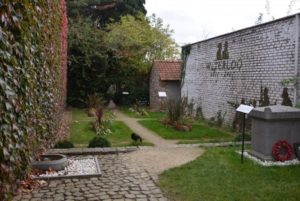

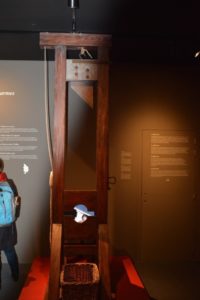

















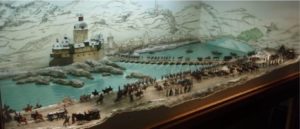


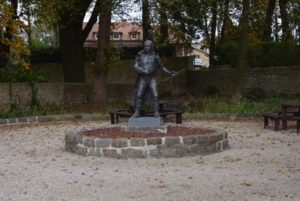
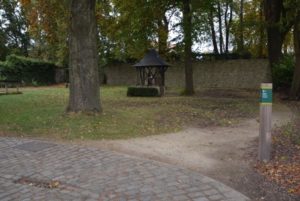
Thanks Rob
Make sure you can go in the summer and watch the battle through the goggles from Lion Hill.
Fascinating blog. I have always been interested in the battle of Waterloo and your story has motivated me into organising a trip to the battlefield next year.
Kind Regards,
Rob Gascoigne.